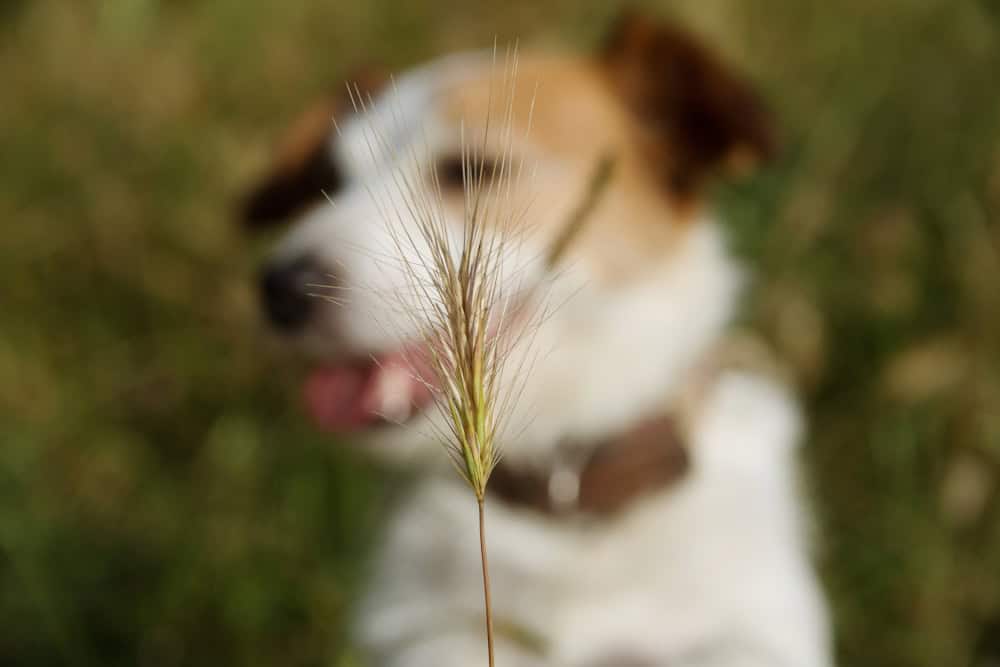Protecting Your Dog From Foxtails

A waving field of foxtails may be the peaceful, natural moment you need to calm your mind, but beware. These clusters of seeds can be dangerous for your dog. Our easy-to-follow guide will help you and your dog avoid issues with foxtails.
Where Are Foxtails Found?
Foxtails get their name from their resemblance to bushy foxes’ tails, but that’s all they should ever have in common with canines. These seed clusters are often found on hiking trails, along roads, and even in backyards.So they’re common in areas where we might play, hike, or camp with our pet dogs.
Why Is This Plant a Problem?
Foxtails become problematic in the summer because they’ve had time to dry out, get hard, and create a real ouch for anyone who comes into direct contact with them. Since we never get a true freeze off in the winter, they can be a problem in our area throughout the year. Because they are generally knee-high (or waist-high) for us, we may not see their danger. Yet, that exact height brings them to nose and eye-level for our dogs, and that’s where the trouble starts.
Like arrows, foxtails can seem smooth in one direction and barbed in the other. The targets for these particular arrows would be your dog’s nostrils, mouth, ears, and eyes. Getting poked in the face with grass seems painful enough!
Unfortunately, the injuries often don’t end there. Just like any thorn or stick, foxtails can stick and puncture, leading to pain and potential infection. What’s even worse, dogs can breathe in these sneaky, dart-like seeds, which can subsequently get caught in the nasal passages or throat. In what’s known as “migration,” foxtails can continue to make their way through these passages until they’re in the brain or lungs. These are emergency situations.
What to Watch Out For
Cuts, scrapes, and punctures can lead to limping or consistent licking. Injuries that become swollen, warm, or pus-filled can be infected and will require attention from your veterinary team. Whether from a surface injury or from a migrating foxtail, other signs of serious infection include lethargy, confusion, and lack of appetite.
Eyes, ears, and noses may swell or redden if poked by a foxtail. You could see discharge from these areas, too. But you need to be on the lookout for signals that a foxtail has become a foreign body (an object that has become lodged internally) that must be removed, too. A migrating foxtail might make your dog:
- Sneeze repeatedly
- Gag or cough
- Tilt or shake their head
Especially after outdoor time, contact us or the nearest emergency vet if you notice these signs.
Prevent Foxtail Veterinary Emergencies
What can you do to protect your pet from this summer weed? Plan ahead and be vigilant with these tips:
- After walks, check your dog all over, including in the eyes, ears, fur, and space between toes for foxtail hitchhikers.
- Consider asking your groomer for a shorter “summer cut” to discourage debris from sticking to fur.
- If you see foxtail spikes in your dog’s coat, use gloves or tweezers to remove them to avoid hurting yourself.
You’ve heard about an ounce of prevention, and in this case, it’s to simply avoid tall, grassy areas and not encounter foxtails in the first place.
Who knew that grass could be such a problem? We did, and now you do, too! We at Bowman Veterinary Hospital hope that you and your pets stay safe this summer!


